Like pretty much everyone on the planet, I haven’t gone anywhere at all lately. I’ve mostly enjoyed cooking for myself at home. But a few weeks ago, I simply couldn’t face another grilled cheese sandwich. My takeout craving got the better of me and I splurged on DoorDash from my favorite ramen place.
It wasn’t long until I got my favorite notification: “Your Dasher is approaching!”
Five minutes pass. Ten minutes. Twenty. I requested an update, and received this:
“I promise you I dropped it at apartment 108 if you could ask—they must have it.”
While I understood the plight of the driver—he had cut his losses and driven off to complete his next order to earn a living—finding my food was now solely up to me. I went outside in search of my ramen and, after combing through the building, my quest ended when I discovered the order outside a different apartment. . .in the hands of another resident! By the time I finally got the food back to my apartment, the broth was cold, the noodles had stuck together, and my experience using a third-party delivery service was memorable for all the wrong reasons.
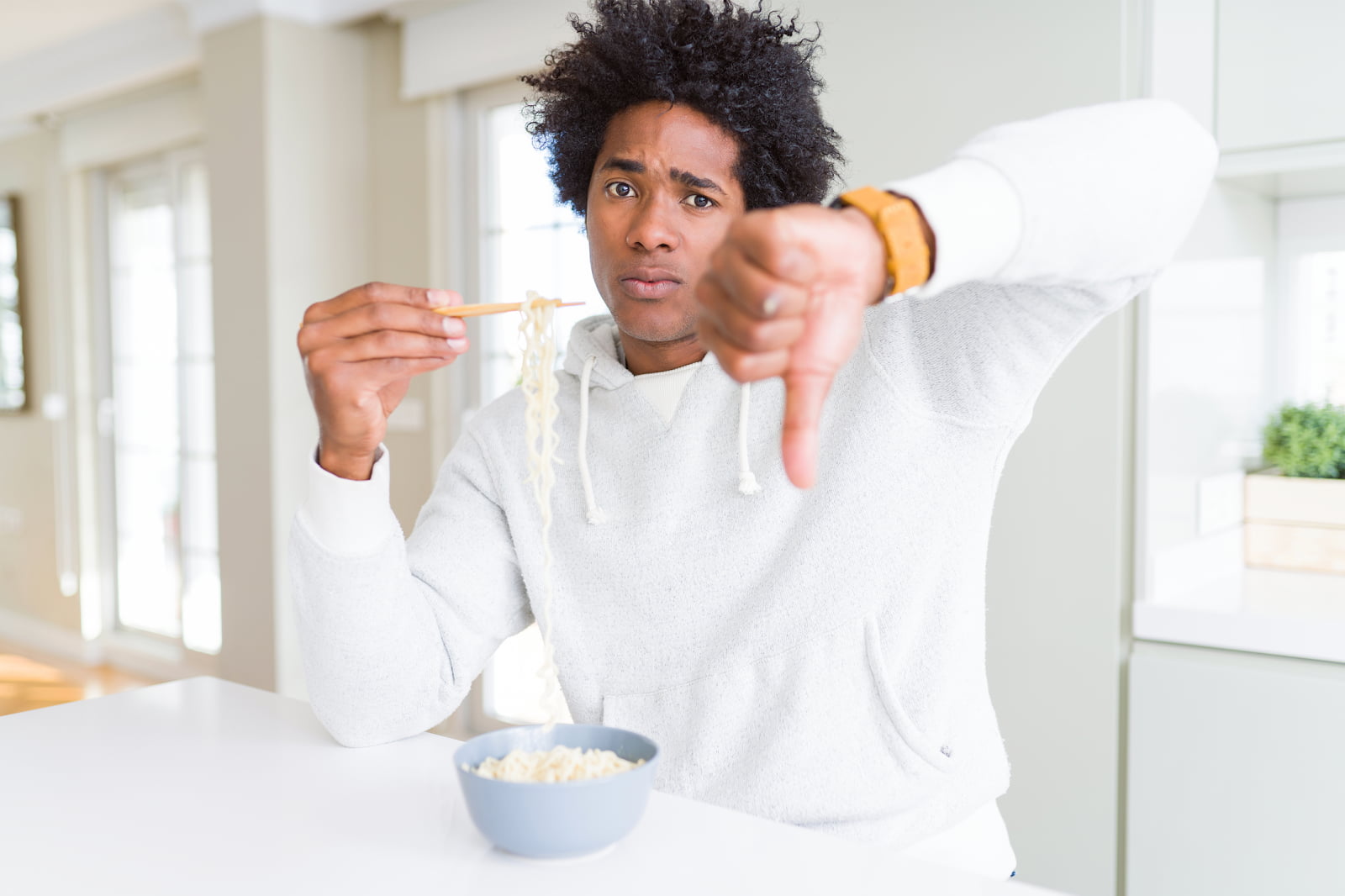
When they work as intended, food delivery services like DoorDash, Uber Eats, and Grubhub provide excellent value by offering a huge variety of restaurant options delivered right to your door. But, our current socially-distanced reality complicates food delivery for everyone involved: restaurants struggle to safely serve customers, consumers want to support local business but are encouraged (or required) to stay home, and delivery workers risk getting sick just to stay afloat. There were already countless ways an order could go awry, and as the pandemic continues, the logistical nightmare worsens. Right now, restaurants will make as many meals as drivers can handle. The opportunity to improve the end-to-end experience lies with the third-party delivery providers themselves. Although DoorDash mollified me with an apology and full credit upon reporting the incident, every negative order experience chips away at their bottom line and brand experience.
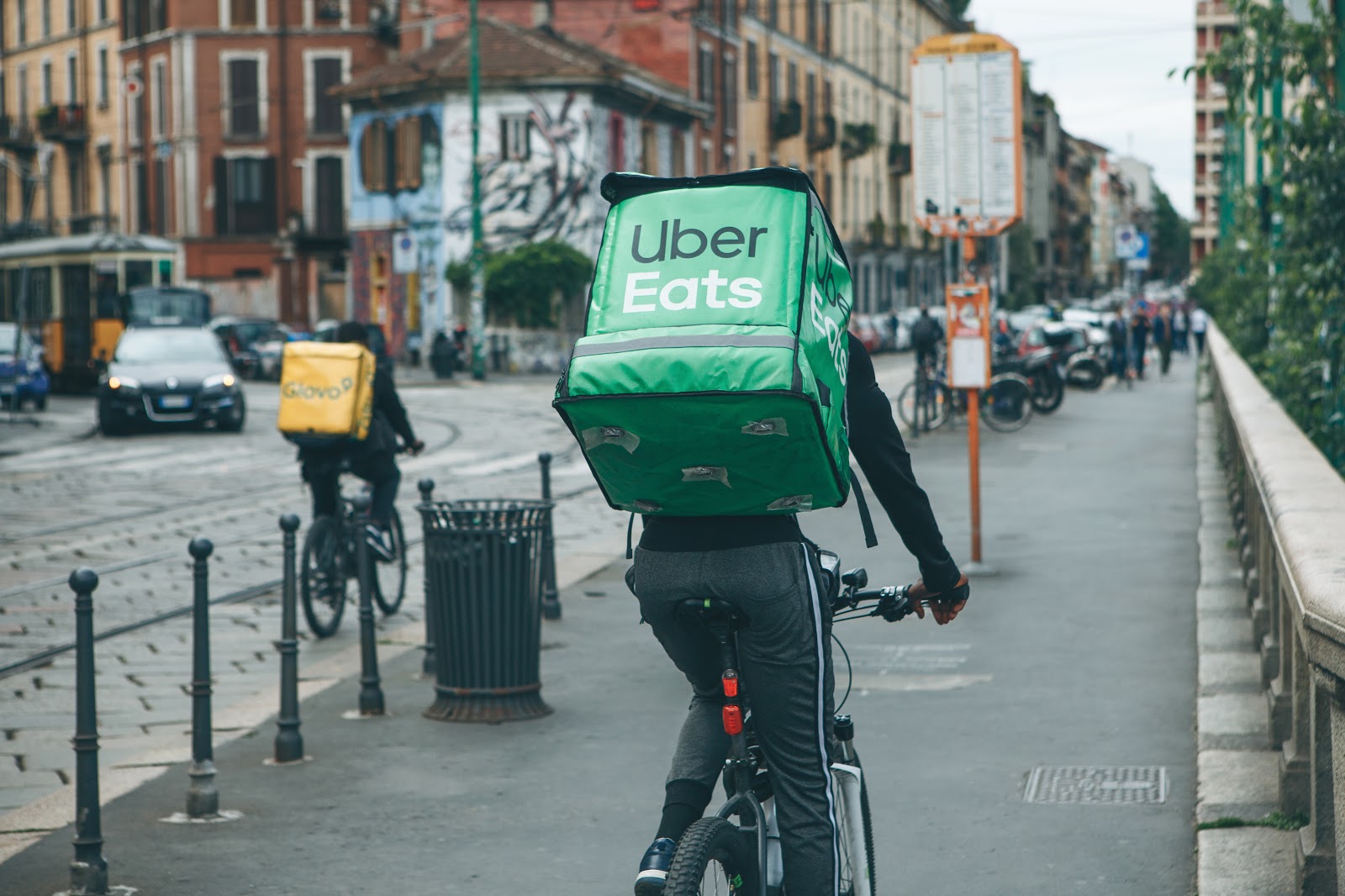
As a product design consultant, I started to brainstorm ways technology could be applied to increase the food delivery experience quality and consistency for both customers and delivery workers. Online delivery platforms have already taken a step to safeguard drivers and diners by defaulting to contactless delivery. But in a time of social distancing and economic strain, even the biggest platforms are searching for ways to stay relevant and differentiate themselves.
When they work as intended, food delivery services like DoorDash, Uber Eats, and Grubhub provide excellent value by offering a huge variety of restaurant options delivered right to your door. But, our current socially-distanced reality complicates food delivery for everyone involved…
In 2018, the projected online food delivery revenue in the US placed with third-party platforms was expected to increase from $13.2B to a whopping $43.4B by 2022.
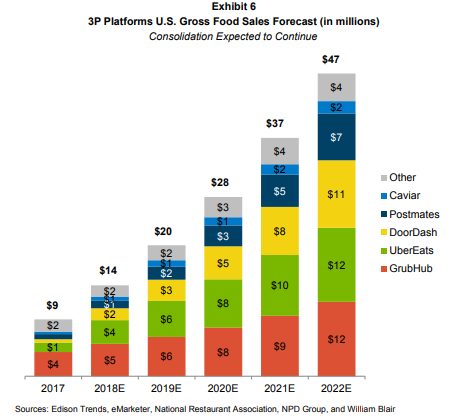
The onset of a global pandemic has only accelerated the popularity of online food delivery orders. In the first quarter of 2020, Grubhub reported that the number of active diners rose by 24% and revenue rose 12%, though they still suffered a slight net loss due to higher expenses. UberEats reported a 54% surge in gross bookings while Uber overall suffered a $3B loss. With the recent news that Uber is in talks to buy Grubhub for over $6B, the survival of other delivery services is on the line. Now is the time to stand out.
Physical product design has demonstrated an exceptional ability to transform service-oriented industries. I believe online food delivery is ripe to benefit from innovative hardware development for five reasons:
- As competition rises and margins tighten, food delivery companies need a way to differentiate their offering other than price.
- Food delivery companies compete fiercely for drivers as much as diners. Creating technology that improves the driver experience can attract more drivers as an alternative or supplement to existing financial incentives.
- Another gig economy, ridesharing, has already successfully evolved to incorporate custom-built electronics that drive differentiation and improve user experience.
- Software features can be copied and do not provide sufficient differentiation. A software product alone is not enough to compete.
- Food appeals to us in a visceral way. Purely software-based companies that provide food delivery can best mirror this appeal to our senses with a physical presence.
With tightening margins, can the online food delivery industry see the return on investment for custom-built hardware? Absolutely. Top-tier drivers need to complete >95% of orders to qualify for the highest driver incentives from DoorDash, Grubhub, and Uber Eats, which indicates the driver average is below this threshold. Assuming at least 5% of orders encounter an issue, order improvement could be a multi-billion dollar opportunity.
Food delivery companies should take cues from the rideshare giants that continue to use custom hardware as a way to bolster app sales, improve profitability, and streamline their user experience.

In 2016, Uber and Lyft both entered the world of custom hardware when they launched the first iterations of Uber Beacon and the Lyft Amp. Both products aim to help riders and drivers identify one another. The concept was simple—a dashboard-mounted LED display whose color was matched for riders via the app—but, the effects were profound. With their own GPS and IMU sensors in driver vehicles, Uber built a powerful tool to increase location tracking precision in their app. Using higher-performance sensors than those available in mobile phones, combined with purpose-built algorithms, they were able to increase the pickup and drop-off location accuracy compared to relying solely on the driver’s phone.
In crowded urban areas with packed high-rise buildings, GPS-only location techniques are prone to errors due to poor signal strength. Uber’s engineering team released estimated location data comparing the performance of Beacon’s sensor fusion to traditional GPS-only methods, and the results are clear. The GPS-only estimated location sometimes placed the vehicle on the wrong side of the street or inside buildings, whereas the Beacon’s sensor fusion estimated location tracked the vehicle’s position with remarkable accuracy.
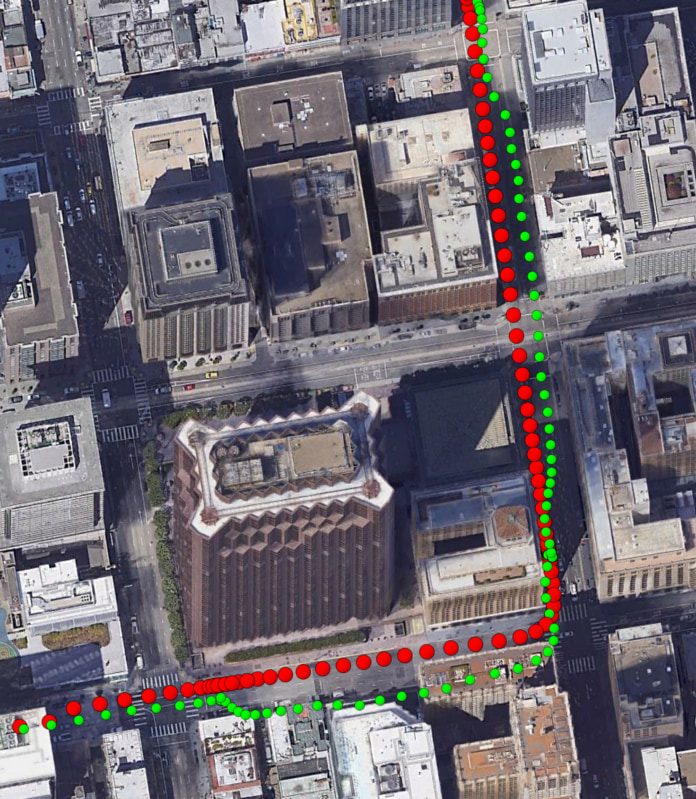
Additionally, both companies discovered that drivers with this custom hardware found riders after less back-and-forth contact, and saw lower volumes of cancelled rides in difficult pickup areas. An increase in pickup and drop-off efficiency means drivers spend more time on the road, resulting in more rides completed, more revenue generated, and a more positive experience for drivers and riders alike.
Aside from the financial benefit, Beacon and Amp provide a way for Uber and Lyft to appeal directly to riders. With a rider-facing screen in Amp and Beacon 2.0, both rideshare companies can display a rider’s name as well as friendly safety reminders. These devices offer an added layer of trust; while anybody can apply to be a driver, the custom hardware serves as a badge of authenticity. I’ve never ridden in the same rideshare vehicle more than once, but seeing a Lyft Amp in multiple vehicles has offered a sense of familiarity and permanence to an otherwise unconnected fleet. These rideshare companies found a way to be consistent in their brand experience through custom hardware development.
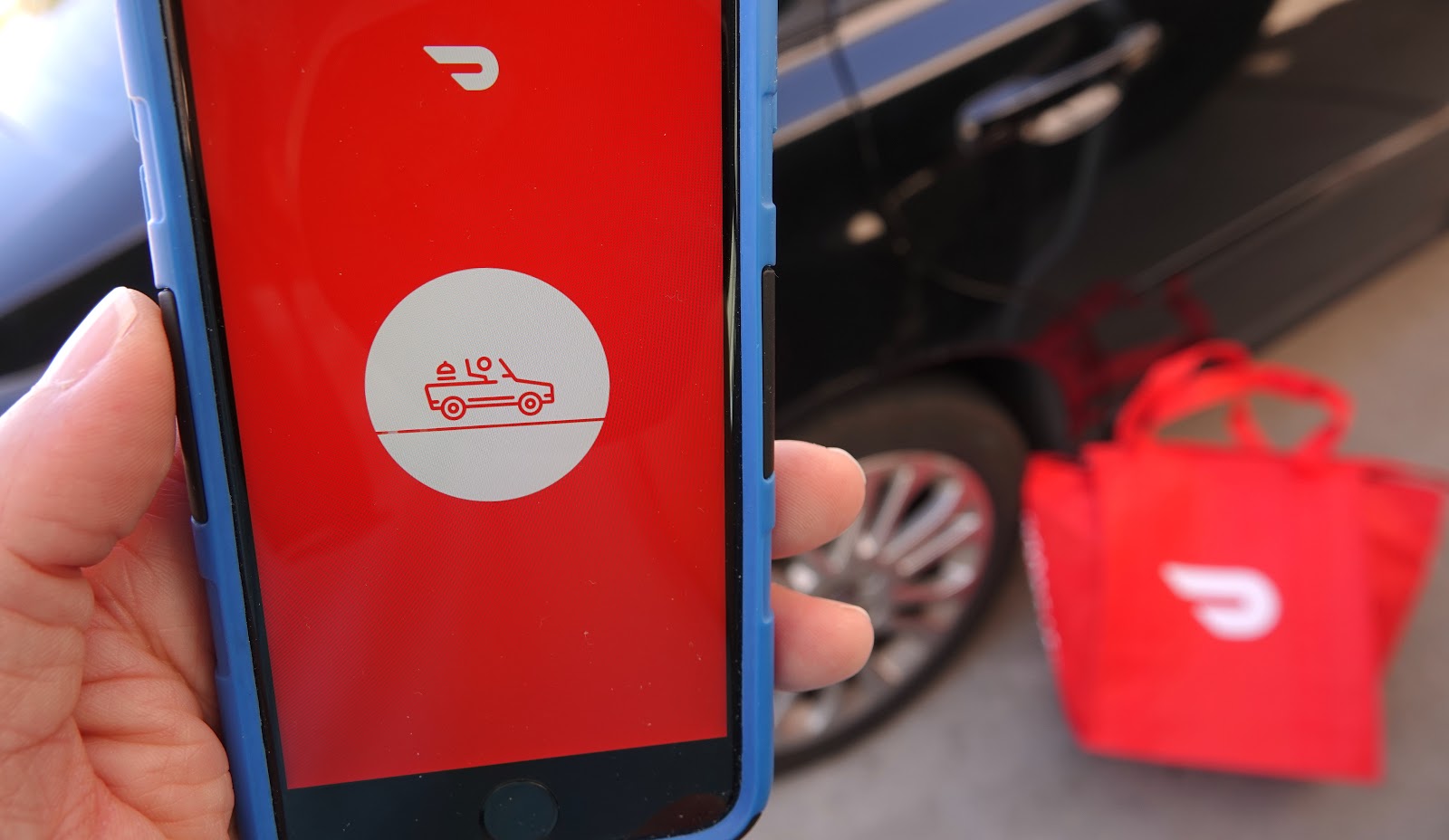
What Kind of Physical Asset Should Food Delivery Services Use to Enhance Their Market Position?
The usual Synapse MO would be a full brainstorming and ideation process to find the highest-value solution; but for fun, we’ll just borrow the “location tracker” idea from the ridesharing hardware. Instead of a dashboard-mounted device, let’s imagine a smart tote bag. And, because I love coming up with product names: DoorDash’s tote bag is called DashDish, GrubHub’s would be GrubHubHub, and UberEats could have UberEato (think ooh! burrito). The delivery company would hand out the smart tote bag to drivers, and over time reap the same benefits as Uber and Lyft—updated location accuracy in the app—which is, on its own, a powerful tool to better connect drivers and customers.
Unlike rideshare drivers, delivery drivers move between pickup and delivery locations that are “off-road.” Navigating to a street address is not a novel concept in 2020, but navigating to the right apartment door, or to a restaurant’s pick-up station, is not as straightforward. By using a DashDish, GrubHubHub, or Uber Eat-o, these companies can build a database of specific front door locations over time to increase both the speed and accuracy of their deliveries. While no single driver has delivered to my apartment more than once, I have used each service multiple times. Here lies the opportunity to permanently increase service quality and, therefore, service price: companies could provide a ‘finders fee’ bonus to drivers who visit a front door for the first time with their smart tote bag, guiding the next driver, and every driver after that, directly to my front door. The concern for privacy here is minimal, as most users want the service to find their front door. Still, users can ideally opt-out of front door tracking data. The takeout location at each restaurant can also be updated in the door database, which will help delivery drivers save time during pickup. After the initial location database is built with data from deployed devices, average delivery times are all but guaranteed to drop, and variation in delivery time will tighten. These benefits are a win-win-win for the consumer, driver, and food delivery platform.
An accurate front door database has potential to unblock other forward-looking technologies. In 2017, DoorDash and Postmates partnered with Starship Technologies to pilot an autonomous food delivery system in a few cities across the US. After raising an additional $40 million last August, Starship Technologies has already expanded its robot food delivery service to include college cities like Tempe, AZ. The company plans to expand this service to over 100 universities in 2021. College campuses, with hundreds and sometimes thousands of residents at one street address, are a prime example of how building a specific drop-off location database could make a swift and sizable impact. The drone delivery landscape, as a whole, is still in its infancy phase, with multiple applications in development by a myriad of companies. Starship is expanding their ground-based last-mile food delivery robots, Amazon is developing Prime Air for air-based parcel delivery, and companies like Cruise and Waymo are refining their autonomous taxi services (people delivery). Regardless of application and whether the courier is human or machine, improving the customer experience is crucial for adopting any of these new technologies.
Innovative features can further bolster the impact of the smart food tote bag concept. Imagine a temperature control system within the smart tote bag that holds food at the proper serving temperature for a much longer time. Hotter food, coupled with reduced delivery time, are an undeniable one-two punch. The customer experience will sky-rocket, driver tips will increase, and drivers will be enabled to make more deliveries in a given time while receiving higher ratings. Any food delivery service that can provide these improvements and tie it to their brand experience will be more likely to boost driver loyalty, customer exclusivity, and attract more lucrative restaurant partnerships.

This same temperature control system could also keep cold foods colder, allowing new restaurants entrance into the food delivery market. My biggest vice in life is my ice cream addiction, and a big part of my enjoyment comes from eating it at the right temperature (freezing cold!). With the unpredictability of delivery, I would never order ice cream—who wants a soupy mess brought to their doorstep? Evidence of this limitation is already straining the industry. Three Twins, an ice cream manufacturer based in the Bay Area, closed after operating for 15 years due to an unsustainable hit in the business from COVID-19. If a delivery provider could guarantee reduced delivery times and keep desserts chilled, more business could enter the food delivery world and save them from closing altogether.
Custom hardware development opens up a world of powerful solutions for delivery services to improve the end to end experience for drivers and customers alike. I would love to see the food delivery service evolve in a way that adds value to both customers and drivers, and adapts to fit the new normal of social distancing. I would also, in a heartbeat, pay a premium if I knew my food would arrive hot and on time. Until that day comes, I will be working on my prototype ideas for DashDish, Grubhubhub, or Uber Eat-o.
